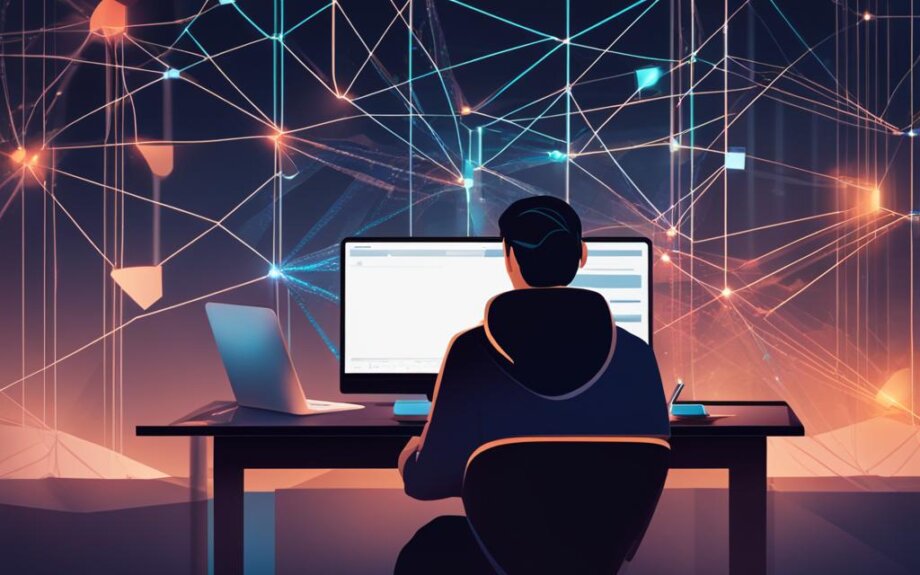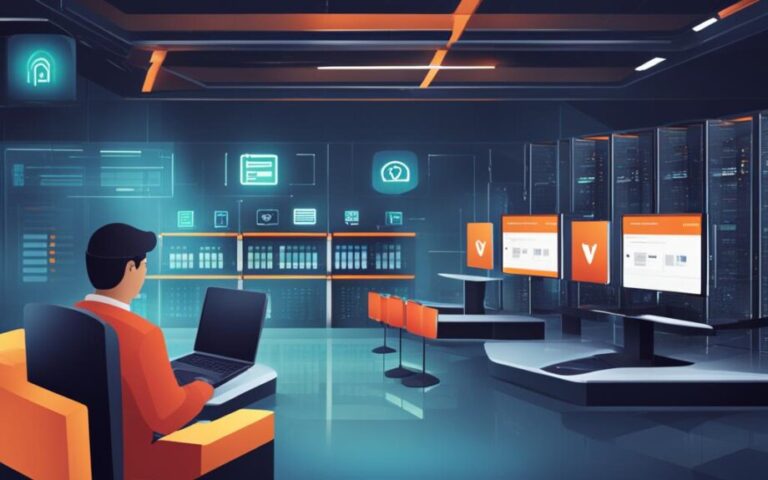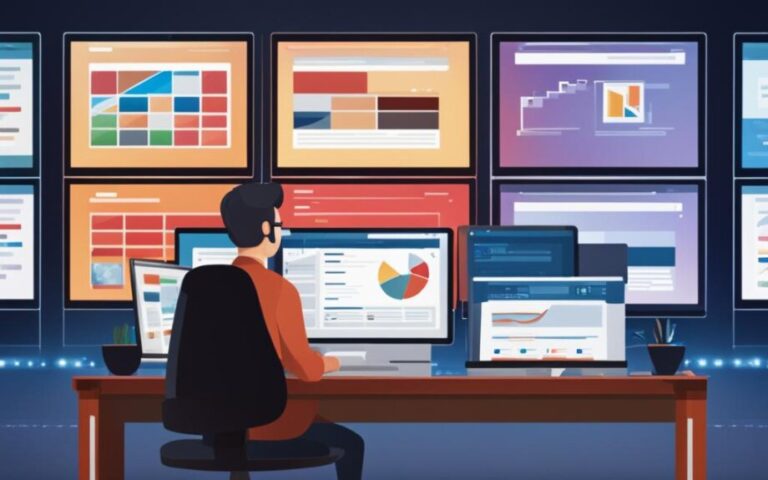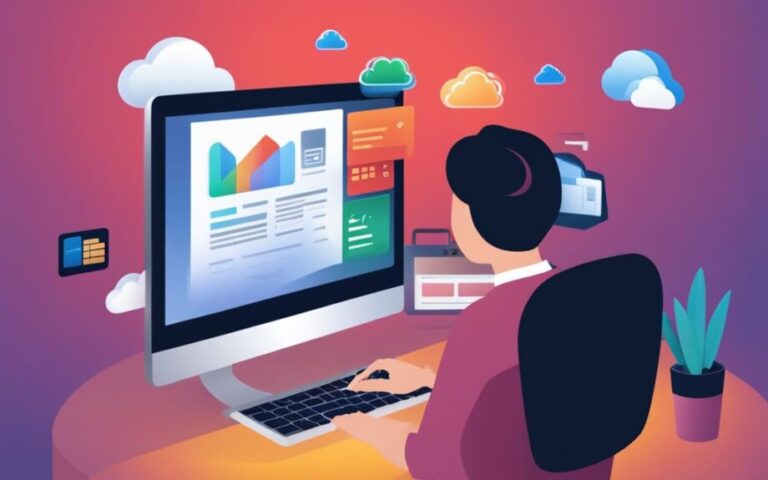Welcome to your comprehensive guide for setting up and managing a personal VPN. In today’s digital age, it’s crucial to prioritize the security and privacy of your online activities. Setting up a personal VPN is an effective solution to safeguard your online data from prying eyes.
In this guide, we’ll provide you with essential tips and strategies to help you with the personal VPN setup and management process. You’ll learn the basics of VPNs, how to choose the right VPN provider, and step-by-step instructions for setting up your personal VPN.
But we won’t stop there. We’ll also cover how to effectively manage your personal VPN, maximize security, and best practices for using your VPN. Plus, we’ll discuss emerging VPN technology and trends to keep you up to date.
By the end of this guide, you’ll have mastered how to set up and manage a personal VPN. Let’s get started!
Understanding the Basics of VPNs
Welcome to the world of personal VPN setup and management! Before you dive into the setup process, it’s essential to understand the basics of VPNs.
What is a VPN?
A Virtual Private Network (VPN) is a secure, private network that allows you to connect to the internet privately and anonymously. When you connect to a VPN, your online traffic is encrypted, making it difficult for cybercriminals and ISPs to track your online activities.
How does a VPN work?
A VPN works by establishing a secure, encrypted connection between your device and the internet. When you connect to a VPN, your device sends its traffic through an encrypted tunnel to a server located in a different location. Your IP address is replaced with the VPN server’s IP address, and your online activities are hidden from prying eyes.
Why do you need a VPN?
There are several reasons why you might want to use a personal VPN for setup and management. A VPN can help you:
- Bypass internet censorship and geo-restrictions
- Protect your online activities from hackers and cybercriminals
- Hide your IP address and online activities from your ISP
- Securely access private networks while traveling
What are the different types of VPNs?
There are two main types of VPNs:
- Remote access VPN: This type of VPN is used by individuals who need to securely access a private network from a remote location.
- Site-to-site VPN: This type of VPN is used by companies to securely connect two or more networks over the internet.
It’s important to note that not all VPNs are created equal. Some are faster, more reliable, and more secure than others. We’ll discuss how to choose the right VPN provider later in this guide.
Now that you understand the basics of VPNs, it’s time to move on to the next section, where we’ll go over the key factors to consider when choosing a VPN provider for your personal VPN setup and management needs.
Choosing the Right VPN Provider
When it comes to personal VPN setup and management, selecting the right provider is crucial. There are many factors to consider, ranging from security and privacy features to performance and ease of use. Here are some essential tips to help you make an informed decision:
- Research potential providers: Before committing to a VPN provider, take the time to research and compare different options. Look for providers that prioritize your security and privacy, have positive user reviews, and offer a range of features that meet your needs.
- Consider security features: Security is a top priority when it comes to VPNs. Look for providers that offer strong encryption protocols, kill switches, and other security features that protect your online data.
- Check for logging policies: Some VPN providers may log your online activities, potentially compromising your privacy. Look for providers with strict no-logging policies to ensure that your data remains confidential.
- Assess performance: A VPN that slows down your internet speed or frequently disconnects can be frustrating. Look for providers that offer optimized servers, fast speeds, and reliable connection stability.
In addition to these factors, consider your personal needs and preferences when choosing a VPN provider. Do you need a provider with servers in specific locations? Do you prefer a user-friendly interface? By taking the time to evaluate different providers and their offerings, you can find a personal VPN solution that suits your needs and maximizes your security.
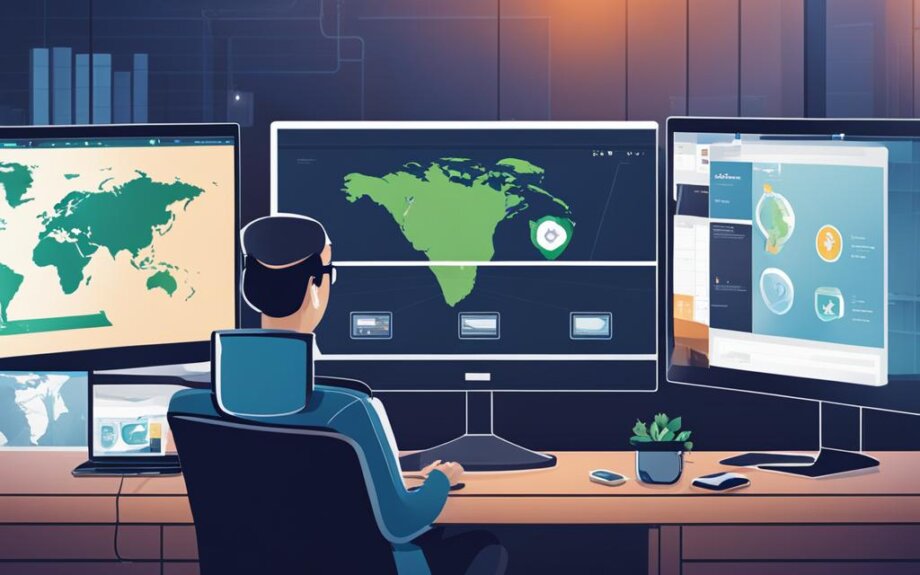
Setting Up Your Personal VPN
Setting up your personal VPN is a straightforward process that involves selecting the right protocol, installing the necessary software, and configuring the VPN settings. In this section, we’ll take you through each step of the process.
Choose the Right Protocol
Before you can begin setting up your VPN, you’ll need to choose the right protocol. The most common protocols are OpenVPN, L2TP/IPSec, and PPTP. OpenVPN is considered the most secure, while PPTP is the easiest to set up. L2TP/IPSec offers a good balance between security and ease of use.
Install the Necessary Software
Once you’ve selected your protocol, you’ll need to install the necessary software. Most VPN providers offer their own software, which you can download from their website. Alternatively, you can use third-party VPN software, such as OpenVPN.
During the installation process, make sure to follow the instructions carefully. You may need to enter your VPN provider’s username and password or other login credentials.
Configure the VPN Settings
After you’ve installed the software, you’ll need to configure the VPN settings. This involves entering your VPN provider’s server information, which you can typically find on their website or by contacting their customer support team.
You’ll also need to configure other settings, such as the protocol, encryption level, and automatic reconnect options. These settings may vary depending on your VPN provider and software.
Once you’ve configured the settings, you can connect to your VPN and enjoy a secure and private online experience.
Managing Your Personal VPN
Congratulations! You have successfully set up your personal VPN. Now, it’s important to know how to effectively manage it to ensure optimal performance. In this section, we’ll explore techniques for managing your personal VPN and keeping it up to date.
Stay Up-to-Date with Software Updates
Like all software, your VPN requires regular updates to ensure it continues to function properly and protect your data. Ensure you have automatic updates enabled, or manually check for updates periodically.
Additionally, keep an eye out for any security patches or bug fixes that may be released. These updates will ensure that your personal VPN is working correctly to provide a secure and private online experience.
Monitor Your Bandwidth Usage
Personal VPNs can consume a significant amount of bandwidth, which can slow down your internet speed. Be mindful of your bandwidth usage and monitor it periodically to ensure you are not exceeding your internet service provider’s data caps.
If you experience slow speeds or poor performance, you can try connecting to a different VPN server or upgrading your internet service plan to accommodate higher bandwidth needs.
Troubleshoot Common Issues
If you encounter any issues with your personal VPN, it’s important to troubleshoot and resolve them as quickly as possible to minimize downtime and potential security risks.
Common issues can include connection problems, slow speeds, or software crashes. Refer to your VPN provider’s documentation or knowledge base for troubleshooting tips and solutions. Alternatively, you can contact their customer support for assistance.
Regularly Evaluate Your VPN Provider
VPN providers can vary widely in terms of their service offerings, pricing, and security measures. It’s important to regularly evaluate your VPN provider to ensure they are still meeting your needs and providing adequate security.
Consider factors such as their server locations, encryption protocols, and logging policies. If you feel that your current provider is no longer meeting your needs, do research and consider switching to a different provider.
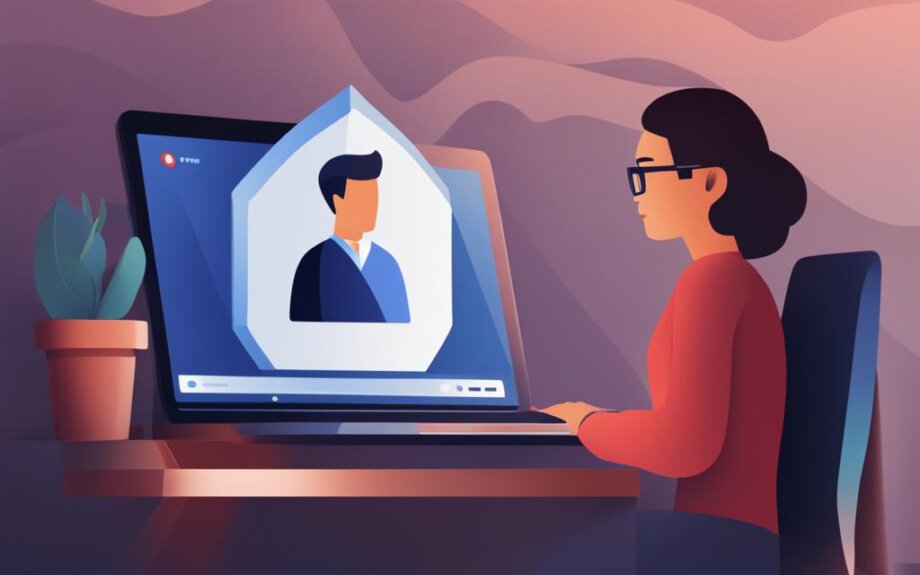
“Managing your personal VPN is just as important as setting it up. By following these tips, you can ensure that your VPN is always functioning correctly and providing the best possible protection for your online activities.”
Maximizing Security with Your Personal VPN
When it comes to using a personal VPN, security should be your top priority. By following these best practices, you can ensure that your online activities remain private and secure:
Use Strong Passwords
When creating your VPN account, be sure to use a strong and unique password. Avoid using personal information such as your name, birthdate, or address. Instead, use a combination of letters, numbers, and symbols to create a password that is difficult to guess.
Enable Two-Factor Authentication
Two-factor authentication is an extra layer of security that requires you to provide a second form of identification, such as a text message or email, in addition to your password. Enabling two-factor authentication on your VPN account can significantly enhance your security.
Avoid Potential Pitfalls
There are several common mistakes that can compromise the security of your personal VPN. For example, be sure to choose a reputable VPN provider with a strong track record for security. Additionally, avoid using free VPN services, as these may not provide adequate privacy protections.
Keep Your Software Up to Date
Software updates frequently include security patches and bug fixes that can improve the performance and security of your VPN. Be sure to regularly update your VPN software to ensure that you are running the latest version.
Use Anti-Virus Software
While a VPN can protect your online activities, it is still important to use anti-virus software to safeguard your device from malware and other cyber threats. Ensure it is updated regularly and use quality anti-virus software.
Be Cautious When Sharing Data
When sharing sensitive information online, such as personal or financial data, be sure to use secure websites with SSL encryption. This can help protect your data from interception by third parties.

VPN Usage Best Practices
Now that you’ve set up and configured your personal VPN, it’s time to start using it. To ensure optimal performance and security, here are some best practices to keep in mind:
Protect Your Online Activities
When using your personal VPN, it’s important to remember that it only protects your online activities while you are connected to the VPN server. Be sure to connect to the VPN whenever you need to access the internet, especially when using public Wi-Fi networks. This will help safeguard your personal data and online activities from prying eyes.
Choose the Right Server
When selecting a VPN server, consider its location and the type of activities you will be performing. If you need to access geo-restricted content, choose a server located in the same country as the content. If you’re concerned about online privacy, consider connecting to a server located in a country with strong data protection laws.
Enable Kill Switch
Many VPN providers offer a kill switch feature that automatically disconnects your internet connection if the VPN connection drops. This prevents your online activities from being exposed to your internet service provider or other third parties. Be sure to enable this feature in your VPN settings.
Avoid Free VPNs
While free VPNs may seem like a good deal, they often come with hidden costs. Free VPN providers may collect and sell your personal data, display ads, or limit your bandwidth and connection speed. To ensure the privacy and security of your online activities, it’s best to choose a reputable VPN provider with a paid subscription plan.
Regularly Update Your VPN Software
VPN technology is constantly evolving and security vulnerabilities may be discovered over time. To ensure your personal VPN remains secure and up to date, regularly check for and install software updates provided by your VPN provider.
Use Strong Passwords and Enable Two-Factor Authentication
Protect your personal VPN account with strong, unique passwords and enable two-factor authentication whenever possible. This will help prevent unauthorized access to your account and ensure that your personal data remains private and secure.
By following these best practices for using your personal VPN, you can maximize its performance and security. Remember to stay updated with the latest VPN technology and software updates to ensure the best possible experience.
Staying Updated with VPN Technology
Personal VPNs have become an essential tool for ensuring online security and privacy. As VPN technology continues to evolve, staying updated has never been more important. Here are some tips to help you keep your VPN current:
Follow VPN Provider News and Updates
The best way to stay updated on the latest VPN technology is to follow your VPN provider’s news and updates. Most reputable VPN providers will regularly publish blogs and newsletters that offer insights into new features, emerging protocols, and industry trends. Be sure to subscribe to these updates and stay informed on the latest developments.
Participate in Online Forums
Another great way to stay updated on VPN technology is by participating in online forums. These forums can provide a wealth of knowledge on the latest developments in VPN technology, as well as expert insights from other VPN users. Some popular VPN forums include Reddit’s r/VPN and the VPN subforum on Tom’s Hardware.
Stay Informed on Data Privacy Regulations and Cybersecurity Threats
Keeping up-to-date on data privacy regulations and cybersecurity threats is also important for staying informed on VPN technology. With data breaches and cyber attacks becoming increasingly common, it’s important to know how VPN technology can help protect you. Follow reputable cybersecurity news outlets like CyberScoop and Dark Reading to stay informed on the latest threats and regulations.
Regularly Update Your VPN Software
Finally, it’s important to regularly update your VPN software to ensure that you’re taking advantage of the latest upgrades and security features. Most VPN providers will automatically notify you of any updates, but it’s always worth checking for updates manually on a regular basis.
By staying informed on VPN technology, you can make sure that you’re getting the most out of your personal VPN setup and management. So stay up-to-date and stay protected!
Conclusion
Now that you have learned how to set up and manage a personal VPN, you can enjoy a more secure and private online experience. By following the guidelines and best practices outlined in this guide, you can protect your online activities and data from prying eyes and potential threats.
Remember to regularly update your VPN software to stay protected against the latest security threats and to optimize the performance of your VPN. Be sure to also choose a reliable VPN provider that offers the features and protocols that best suit your needs.
With your personal VPN set up and properly managed, you can enjoy peace of mind knowing that your online activities are safe and secure.

